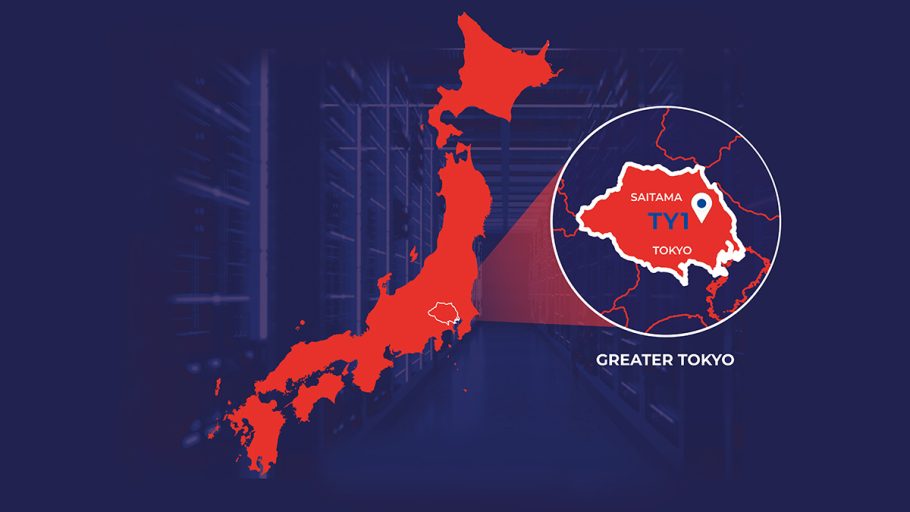As the third largest economy in the world and home to multinational companies focused on cloud, robotics, artificial intelligence, and machine learning, Japan is undoubtedly a leader in technological innovation.
Capital city Tokyo is already a hub of digital infrastructure: It has the largest cluster of data centers in the APAC region, accounts for more than 80 percent of Japan’s total operational capacity and houses a mix of both local and international players. Already a 1GW+ market, it is currently the second-largest data center market in Asia and has more than double that capacity estimated in planned expansion.
A developed economy, stable governance, and mature talent pool are some of the factors that have propelled Tokyo forward. The growing adoption of public cloud and the increasing presence of the force-multiplier and demand-driver that is artificial intelligence (AI) has led to a widespread growth of hyperscalers in the region. That combined with the Japanese government’s support of policies to attract investments in digital infrastructure means that the entire nation is on the cusp of large-scale digital transformation.
A Powerhouse of Potential
The Japan data center market is expected to grow from ~1.4GW in 2023 to 2.4GW by 2028 at a CAGR of 11.5 percent. Depending on how the AI demand develops, it has the potential to double this growth.
Strong governmental support has helped to establish a market that rewards a long-term, sustainable, and consistent approach—which incentivizes building to scale. Where the data center industry in Japan in past was largely dominated by a few players, increasingly more players are entering the market and introducing innovation and best practices to the ecosystem.
The government has also prioritized sustainability: In its sixth strategic energy plan, it set a target for carbon neutrality by 2050 and an increase in renewables in the generation mix to 36 percent to 38 percent by 2030. These targets have led to rising access to green power, which is imperative for sustainable development of the industry.
As the market expands exponentially, Princeton Digital Group (PDG) has a unique ability to draw on our pan-Asian strategy and expertise to deliver growth in the market by cross-pollinating best practices, talent, and capabilities from other markets while simultaneously applying learnings from Japan to other markets.
Our collaboration with clients throughout Asia on high-density deployments—which are tailored to meet the escalating need for AI-ready infrastructure—enables us to support the deployment of state-of-the-art AI technology in Japan.

Saitama Emerges As a Data Center Hub
Our investment in Saitama stemmed from recognizing the opportunities the region offered and its potential as a data center hub in Greater Tokyo. Existing regions are severely challenged in terms of scalable power availability, which makes further growth difficult. Saitama offers the necessary infrastructure to support the expansion of the data center industry, especially with respect to ample land and power resources. Additionally, its well-established network infrastructure and connectivity to both Eastern and Central Tokyo make it an ideal option for future growth.
Our TY1 facility is carrier-neutral and designed to support high density deployments while also being adaptable to new cooling technologies and flexible design requirements. This one billion USD facility has been developed through a partnership with Lendlease—a reputed real-estate partner with experience in delivering large scale projects in APAC. Lendlease developed the core and shell of the facility on a built-to-suit basis, and they delivered on schedule earlier this year.
Our Saitama project marks a significant milestone that lays the groundwork for our Japan strategy. In addition to Saitama, we are exploring opportunities in other areas within Greater Tokyo and Osaka as additional data center clusters develop. We are also considering Japan’s broader landscape (keeping in mind local government policies and other business factors) as we expand beyond more established markets. Our goal is to become a digital infrastructure developer and operator of significant scale in Japan.

Premier Talent
One of the biggest challenges to consider for success in Japan is the country’s high demand for highly skilled talent: Talent is at a premium here, and it’s a highly competitive market. Data centers have long development periods, and hence we want to ensure that people are working for us in the long-term—and have the necessary skills and experience to deliver.
That is why we have invested in building a highly experienced Japan team who have not only a proven track record of operating in key digital economies in Asia, but also localized and deep experience specifically in building and delivering cutting-edge data centers in Japan. We also have industry leaders who have significant experience in and proven track records of initiating and developing data center hubs in Tokyo. PDG’s leadership team is made up of veterans from global telecoms, Internet infrastructure, data center, and real estate sectors who are adept at moving past the boundaries of industries, geographies, and cultures.
Japan is strongly positioned to meet the growing demand for AI data centers due to its advanced technology infrastructure, strategic geographical location, and robust research and development ecosystem. With a skilled workforce and a commitment to innovation, Japan is poised to emerge as a leader in this rapidly evolving sector.
ABOUT THE AUTHOR
Varoon Raghavan is Co-founder and COO of Princeton Digital Group (PDG). He drives the execution of the company’s vision to support the expansion of hyperscalers and enterprises in Asia Pacific with a world-class pan-Asian data center portfolio.
With nearly two decades of experience, Raghavan has a comprehensive background in sales and marketing, product management, engineering, operations, and corporate development within the data center, telecom, and technology sectors.
Raghavan serves as a member of the Infrastructure Masons Advisory Council.



